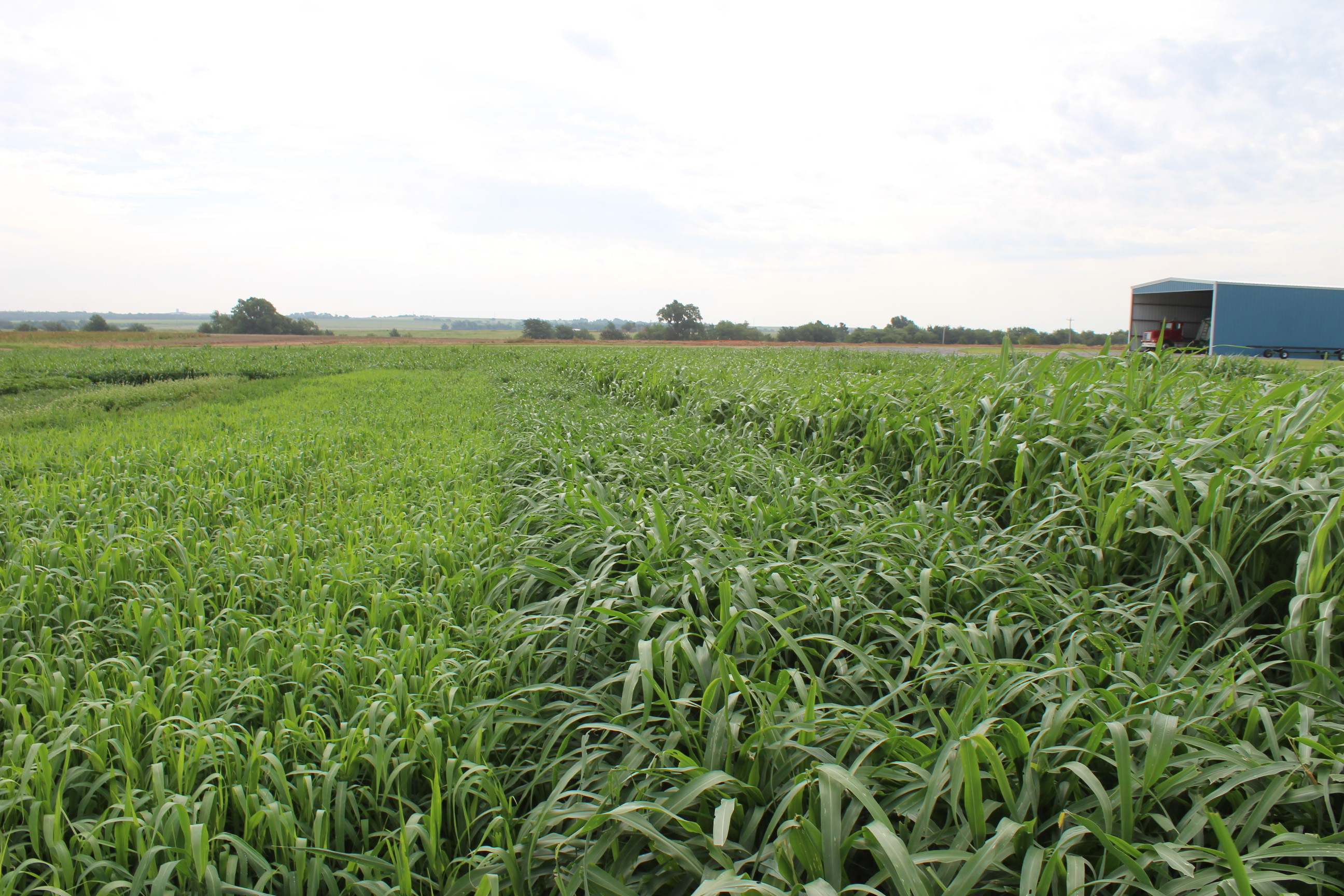Millets are a diverse group of summer annual grasses that fit a variety of needs.

Left: German millet | Right: Pearl Millet. 5 weeks of growth
Pearl millet (Genus Pennisetum) has the highest yield potential among millets because of its hybrid heterosis. Because millets have no prussic acid potential, hybrid pearl millet is preferred for grazing under conditions in which prussic acid might be hazardous. Millets, like any plant, can still accumulate nitrates and should be tested if high nitrates are a potential concern. Pearl millet is more tolerant of sandy and calcareous soils than sor-ghum-sudan, but less tolerant of heavy clay or wet soils. Pearl millet is usually higher in protein than sorghum but loses palatability more rapidly upon maturity and unlike sorghums, pearl millet is safe for horses.
Foxtail millet (Genus Setaria) is also known as German or White Wonder millet. It is earlier in maturity and has lower forage yield potential than pearl millet; howev-er, it is finer-stemmed and cures more rapidly for hay than pearl millet. When growing as a forage, be aware that once it heads out, it loses forage quality, and the bristly awns on the seedheads can cause sores in animal mouths. Foxtail millet should not be used for horses, as it contains a compound that can cause joint pain and problems with the urinary tract.
Browntop millet (Genus Urochloa) is another rap-id-maturing, lower-yielding millet variety, commonly used in the southern plains but can move north also. Browntop holds its palatability after maturity better than other millets and is safe to feed to horses. It is often used in wildlife food plots as it is a good seed producer.
Japanese millet (Genus Echinochloa) matures rapidly and typically yields less forage than other millets but is more palatable than foxtail millet after maturity and has better regrowth. Japanese millet is exceptionally tolerant of wet soil and will even grow in standing water, finding use in duck food plots.
Proso millet (Genus Panicum) is used strictly as a grain crop and has very little forage value, being both unpro-ductive and unpalatable. However, it is one of the most water-efficient grain crops, and is used to provide animal feed in areas too dry for corn or sorghum. It is also used as a rapid-maturing (as little as 60 days to maturity) grain crop when the growing season is too short for a full-season crop, such as when hail takes out the primary crop or for wildlife food plots.
External Links
- Millets | Forage Management – If you have an interest in growing millets as a forage crop or incorporating some into a mixture, here is a great publication offered by Iowa State Extension. This article compares pearl, japanese, foxtail and proso millets in a very dense, easy to read article.